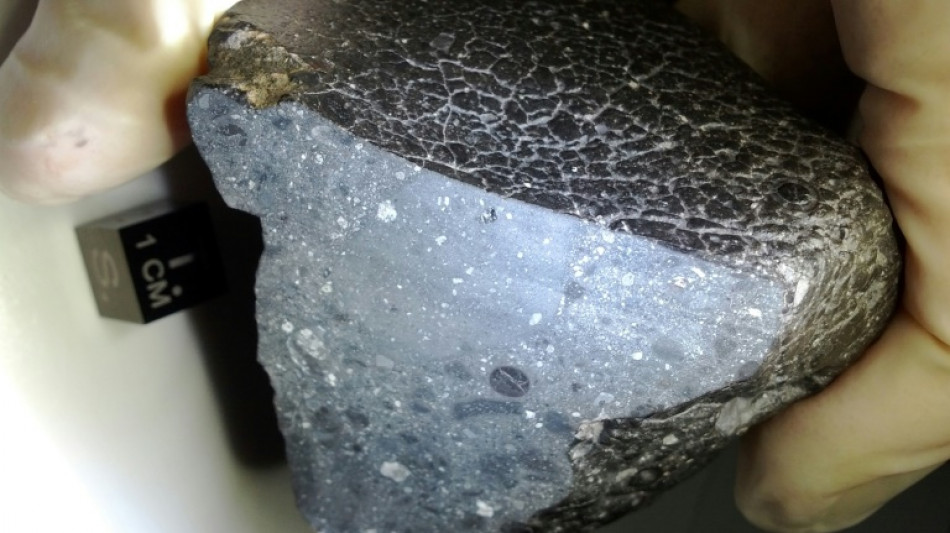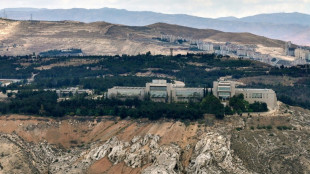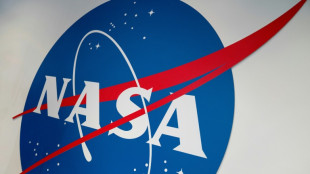
-
 Simbine wins 100m in photo finish thriller as Duplantis dominates
Simbine wins 100m in photo finish thriller as Duplantis dominates
-
Atletico held at Alaves in dry Liga draw

-
 Cardinals meet ahead of vote for new pope
Cardinals meet ahead of vote for new pope
-
Snooker star Zhao: from ban to cusp of Chinese sporting history

-
 Tielemans keeps Villa in chase for Champions League place
Tielemans keeps Villa in chase for Champions League place
-
Anthony Albanese: Australia's dog-loving, Tory fighting PM

-
 Trump may have aided Australian PM's election victory: analysts
Trump may have aided Australian PM's election victory: analysts
-
Right-leaning Australian opposition leader loses election, and seat

-
 India blocks Pakistani celebrities on social media
India blocks Pakistani celebrities on social media
-
Ancelotti says he will reveal future plans at end of season

-
 India-Pakistan tensions hit tourism in Kashmiri valley
India-Pakistan tensions hit tourism in Kashmiri valley
-
Bangladesh Islamists rally in show of force

-
 Zelensky says won't play Putin's 'games' with short truce
Zelensky says won't play Putin's 'games' with short truce
-
Cardinals meet ahead of papal election

-
 Pakistan tests missile weapons system amid India standoff
Pakistan tests missile weapons system amid India standoff
-
France charges 21 prison attack suspects

-
 Pakistan military says conducts training launch of missile
Pakistan military says conducts training launch of missile
-
Lives on hold in India's border villages with Pakistan

-
 Musk's dreams for Starbase city in Texas hang on vote
Musk's dreams for Starbase city in Texas hang on vote
-
Rockets down Warriors to stay alive in NBA playoffs

-
 Garcia beaten by Romero in return from doping ban
Garcia beaten by Romero in return from doping ban
-
Inflation, hotel prices curtail Japanese 'Golden Week' travels

-
 Trump's next 100 days: Now comes the hard part
Trump's next 100 days: Now comes the hard part
-
Mexican mega-port confronts Trump's tariff storm

-
 Trump's tariffs bite at quiet US ports
Trump's tariffs bite at quiet US ports
-
Ryu stretches lead at LPGA Black Desert Championship

-
 Singapore votes with new PM seeking strong mandate amid tariff turmoil
Singapore votes with new PM seeking strong mandate amid tariff turmoil
-
Five things to know about the Australian election

-
 Scheffler fires 63 despite long delay to lead CJ Cup Byron Nelson
Scheffler fires 63 despite long delay to lead CJ Cup Byron Nelson
-
Still Owe the IRS? Clear Start Tax Breaks Down How the Fresh Start Program Can Help You Settle for Less

-
 GISEC Global 2025: Dubai Mobilises Global Cyber Defence Leaders to Combat AI-Driven Cybercrime and Ransomware
GISEC Global 2025: Dubai Mobilises Global Cyber Defence Leaders to Combat AI-Driven Cybercrime and Ransomware
-
Israel launches new Syria strikes amid Druze tensions

-
 Finke grabs 400m medley victory over world record-holder Marchand
Finke grabs 400m medley victory over world record-holder Marchand
-
Apple eases App Store rules under court pressure

-
 Polls open in Australian vote swayed by inflation, Trump
Polls open in Australian vote swayed by inflation, Trump
-
Russell clocks second fastest 100m hurdles in history at Miami meeting

-
 Germany move against far-right AfD sets off US quarrel
Germany move against far-right AfD sets off US quarrel
-
Billionaire-owned Paris FC win promotion and prepare to take on PSG

-
 Teenager Antonelli grabs pole for Miami sprint race
Teenager Antonelli grabs pole for Miami sprint race
-
Man City climb to third as De Bruyne sinks Wolves

-
 Mercedes' Wolff backs Hamilton to come good with Ferrari
Mercedes' Wolff backs Hamilton to come good with Ferrari
-
'Devastated' Prince Harry says no UK return but seeks reconciliation

-
 Elway agent death likely accidental: report
Elway agent death likely accidental: report
-
Turkish Cypriots protest new rule allowing hijab in school

-
 Germany's AfD dealt blow with right-wing extremist label
Germany's AfD dealt blow with right-wing extremist label
-
Trump NASA budget prioritizes Moon, Mars missions over research

-
 Hard-right romps through UK polls slapping aside main parties
Hard-right romps through UK polls slapping aside main parties
-
Rangers hire two-time NHL champion Sullivan as coach

-
 Haaland on bench for Man City as striker returns ahead of schedule
Haaland on bench for Man City as striker returns ahead of schedule
-
US designates two Haitian gangs as terror groups


Scientists find oldest Martian meteorite's original home
Scientists announced Tuesday they had found the crater from which the oldest known Martian meteorite was originally blasted towards Earth, a discovery that could provide clues into how our own planet was formed.
The meteorite NWA 7034, nicknamed Black Beauty, has fascinated geologists since it was discovered in the Sahara Desert in 2011.
It fits easily in the hand, weighing just over 300 grams (10.6 ounces), and contains a mix of materials including zircons, which date back nearly 4.5 billion years.
"That makes it one of the oldest rocks studied in the history of geology," Sylvain Bouley, a planetary scientist at France's Paris-Saclay University, told AFP.
Its journey dates back to the solar system's infancy, "about 80 million years after the planets began forming", said Bouley, who co-authored a new study on the meteorite.
Tectonic plates long ago covered up Earth's ancient crust, meaning that "we have lost this primitive history of our planet", Bouley said.
But Black Beauty could offer "an open book on a planet's first moments", he added.
To open that book, a team of researchers at Australia's Curtin University set out to find the meteorite's original home on Mars.
They knew that it was likely an asteroid hitting the red planet that sent Black Beauty shooting up into space.
The impact "had enough force to eject the rocks at very high speed -- more than five kilometres (three miles) a second -- to escape the Martian gravity", Curtin's Anthony Lagain, the lead author of the study in Nature Communications, told AFP.
Such a crater would have to be massive -- at least three kilometres in diameter.
The problem? The pockmarked surface of Mars has around 80,000 craters at least that big.
- Following the clues -
But the researchers had a clue: by measuring Black Beauty's exposure to cosmic rays, they knew it was dislodged from its first home around five million years ago.
"So, we were looking for a crater that was very young and large," Lagain said.
Another clue was that its composition showed it had suddenly heated up around 1.5 million years ago -- likely by the impact of a second asteroid.
The team then created an algorithm and used a supercomputer to trawl through images of 90 million craters taken by a NASA satellite.
That narrowed it down to 19 craters, allowing the researchers to rule out the remaining suspects.
They found that Black Beauty was dug up from its first home by an asteroid that struck around 1.5 billion years ago, forming the 40-kilometre Khujirt crater.
Then a few million years ago, another asteroid hit not far away, creating the 10-kilometre Karratha crater and shooting the Black Beauty towards Earth.
The region in Mars' southern hemisphere is rich in the elements potassium and thorium, just like Black Beauty.
Another factor was that Black Beauty is the only Martian meteorite that is highly magnetised.
"The region where Karratha was found is the most magnetised on Mars," Lagain said.
Known as the Terra Cimmeria—Sirenum province, it is "a relic of the early crustal processes on Mars, and thus, a region of high interest for future missions," the study said.
Bouley pointed to a "bias" in the currently planned missions to Mars in favour of searching for signs of water and life.
But to understand how planets first form would answer some fundamental questions, Lagain said, including "how Earth became such an exceptional planet in the Universe".
P.Silva--AMWN

